









The staff of Fremont High’s Tiger’s Eye Newspaper is proud to deliver quality content that represents the student body, to be the voice of FHS and to provide the truth to our community.
Annabelle Bignell - Editor-in-Chief
Aidan Eberspacher - Creative Editor
MJ Ideus - Copy Editor
David Stevens - Advisor
Porsche Prado - Staff Writer
Skylar Woodside - Staff Writer
Cassandra Santillan - Staff Writer
Emely Garcia - Staff Writer
The role of an editor encompasses the oversight of journalistic pieces. It is notably disconcerting how readers gravitate towards editors and advisors upon the discovery of any minor error in a publication. It is important to acknowledge that individuals involved in creating and producing these journalistic works invest time and effort in scrutinizing the same text and images over an extended period. Redesigning the same thing repeatedly can often lead to missing some mistakes, as familiarity with the content may call for errors.
There is a double standard within the treatment of student artists/journalists versus student-athletes, particularly when it comes to addressing and acknowledging mistakes. While a football player’s failure to catch a critical pass at a state tournament may be accepted with support and understanding, the same leniency is not often extended to students in these creative programs. There seems to be a pervasive expectation of perfectionism in high school arts, which creates pressure on student-run publications and discourages my acceptance and my staff’s acceptance of mistakes. This double standard requires a critical shift towards a more supportive and understanding approach in the student arts community.
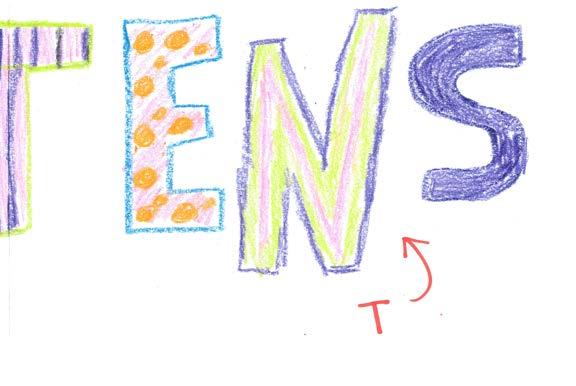




The Tiger’s Eye is a student-run publication of the Fremont High School Journalism Department. The purpose of this publication is to inform the students of FHS, their families and the community of Fremont. The content and opinions of The Tiger’s Eye do not necessarily represent the student body, faculty, administration, adviser or Fremont Public Schools district. The Tiger’s Eye encourages letters to the editors, but reserves the right to reject them for reasons including but not limited to lack of space, multiple letters of the same topic and personal attacks contained in the letter. Letters should be emailed to david.stevens@fpsmail.org.
Vermont Senator Bernie Sanders has embarked on a national tour titled “Fighting the Oligarchy,” aiming to unite citizens against the perceived rising tide of oligarchic influence in the United States.
An oligarchy is defined as a form of government in which power resides in the hands of a small group of individuals or families. This group often holds power due to factors such
supporters, emphasizing the urgency of collective action to preserve democracy and combat economic inequality.
Sanders began by mentioning Trump’s inauguration and pointed out that some of the richest individuals in the country, Elon Musk, Jeff Bezos and Mark Zuckerberg, were seated directly behind the president during the swearing-in ceremony. Sanders also highlighted the presence of Trump’s
who were positioned in the third row.
“It [Oligarchy] will only be defeated by millions of Americans in Iowa, in Vermont, in Nebraska, in every state in this country, who come together in a strong grassroots movement and say no to oligarchy, no to authoritarianism, no to kleptocracy, no to massive cuts to programs that low-income and working Americans desperately need, no to huge tax breaks for the wealthiest

proposed tax cuts favoring the affluent and the corresponding reductions in essential social programs.
“They [the Trump Administration] want massive tax breaks, and I’ll tell you how those tax breaks are going to be paid for. They’re going to be paid for by savage cuts to programs that working-class people desperately need,” he asserted.
Highlighting the state of the nation’s healthcare system, Sanders noted, “At a time when our healthcare system is already broken, they want to make massive, massive cuts to Medicaid. Medicaid provides healthcare to many, many millions of children and workingclass people.”
Sanders also addressed the influence of wealth in politics, criticizing both Republican and Democratic billionaires for their roles in undermining democratic institutions. “The role of billionaires in politics, it’s not just Musk, it’s others,” he said. “It’s not just Republican billionaires, it is Democratic billionaires. It is the corruption of the two-party system.”

The Senator shed light on what he described as a crisis of power rather than just plain old wealth. “It’s not just that the rich are getting richer while working families struggle; this is about power. Oligarchy isn’t merely a financial issue—it’s a political one. We are living in two Americas,” said Sanders. “What we do now
will impact our lives. [Americans] need a grassroots movement that says no to oligarchy.”
Sanders argues that oligarchy is not merely a financial issue, but a political one that impacts every American. In his view, there are two Americas: one that thrives on wealth and privilege, where a small elite has disproportionate power and influence in politics and policymaking, and another that struggles to make ends meet, facing systemic barriers and a lack of representation.
He emphasized that political campaigns need to be funded publicly, not by billionaire donors.
“Democracy is not about billionaires buying the election; it’s about one person, one vote,” Sanders stated. Sanders also called out Nebraska Congressman Don Bacon, urging Nebraskans to pressure their representatives to prioritize the needs of working families over corporate interests. He emphasized, “The message is clear: Get your congressperson to stand with working families and resist the influence of Republican leadership.”
As Sanders’ tour progresses, he continues to rally Americans to engage in the democratic process, advocating for
policies that prioritize the needs of working families over the interests of the wealthy elite. His impassioned speeches serve as a clarion call for unity and action in the face of growing economic disparities as well as the hope to ‘Claw our way back to real democracy.’
“DEMOCRACY IS NOT ABOUT BILLIONAIRES
THE ELECTION; IT’S ABOUT ONE PERSON, ONE VOTE.”

“stylish” comes at a cost
Aidan Eberspacher
Trends have existed for decades: fun floral patterns of the ‘60s, bright neons of the ‘80s, baggy jeans of the ‘90s. While trends can span generations, younger people often find “dressing on trend” more important as it may help boost their social status or confidence.
Whether it’s fisherman or coquette core, clean girl or mob wife aesthetic, you’ve probably seen one or more of these microtrends on various social media platforms. These platforms are saturated with influencers promoting “what’s trending.” Since the rise of social media and influencers, people have increasingly relied on these accounts for fashion inspiration. This reliance has led to a faster trend cycle, with trends changing at a heightened pace, making it difficult for consumers to form a personal style.
Many influencers focus solely on predicting which clothes or styles will be trending next. People move from trend to trend quickly, forcing consumers to shop more to keep up. Fast fashion companies have catered to this fast-paced consumerism by constantly releasing new clothing made with low-quality materials. This overproduction not only fuels excessive waste but also significantly contributes to climate change. According to the United Nations Environment
Programme (UNEP), the fashion industry is responsible for nearly 10% of global carbon emissions, with textile production requiring vast amounts of water and energy. Since consumers are more likely to wear the item less, quality matters less. Instead of prioritizing the longevity of a product, companies prioritize profit and quantity.
Ultra-fast fashion brands benefit from these microtrends. Brands such as Zara,
“
consumer psychology, social media algorithms show trending products in real time. When influencers unbox hauls and end the video with “run to buy this,” a sense of urgency is created to buy an item before it sells out. Fast fashion brands encourage excessive consumption by offering trendy pieces at low prices. This rapid shopping cycle triggers dopamine releases, the brain’s reward chemical, making purchases feel instantly satisfying. However, like
The constant desire to stay on trend has ruined society’s perception of fashion.
SHEIN, and H&M gross billions of dollars in profit each year. According to the Rest of World investigation “How SHEIN Beat Amazon and Reinvented Fast Fashion,” the popular ultra-fast fashion company SHEIN releases millions of new products annually. Consumers can fulfill their craving for instant gratification with SHEIN’s business model, allowing them to go from a TikTok video they just watched to buying the item cheaply on SHEIN.
Instant gratification is essential for fast fashion to thrive. By exploiting
“
any quick dopamine hit, the excitement fades fast, and consumers are ready to find satisfaction in the next trend. This unhealthy cycle of rapid buying and discarding fuels textile waste, overproduction, and unethical labor practices. While the appeal of instant gratification is strong, its long-term consequences extend far beyond an individual purchase.
The constant desire to stay on trend has ruined society’s perception of fashion. Instead of everyone having an individual sense of style, it seems they
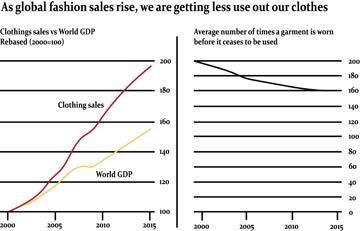
all dress the same. For example, after Adidas Sambas were worn by many models and influencers, they became the “it” shoe. Sambas had been around for decades, but only once the rich and famous wore them was it considered acceptable. The shoes quickly sold out, and Adidas reported a 200% increase in Samba sales in 2023 compared to previous years. After the obvious public interest, there were versions of the shoe everywhere. Other brands tried to replicate the style.
The massive demand for trending items has also fueled the rise of cheap, look-alike versions of popular pieces, or “dupes.” Often, they are cheaply produced with slight changes to avoid copyright infringement, allowing more people to participate in trends without paying full price. However, dupes can be harmful to small businesses because they steal original designs, affecting designers who rely on their creativity to make a living. Beyond ethical concerns, dupes are often made with low-quality materials, contributing to overconsumption and textile waste. Many consumers justify buying dupes as an affordable alternative, but the rise of social media and influencer culture has normalized their presence, making them a staple of fast fashion.
The “it” shoe, water bottle, pair of jeans, hair color, or home decor is pushed onto anyone with a TikTok or Instagram app. Trends cause overconsumption because everyone feels they need
to purchase the new, popular item. However, after the initial interest wanes, the trend becomes widespread, and the uniqueness fades. What follows is a lack of diversity in the way people dress, as well as a negative impact on the environment. For many, fashion is a form of self-expression, a way to stand out from the crowd. When everyone has the same pair of shoes or pants, individuality is harder to maintain.
With trends pushing people toward endless consumption, some are starting to rethink their relationship with fashion and are looking for alternatives. To combat the harms of overconsumption, some influencers have shared how they practice sustainable fashion. While no one needs an influencer to make mindful choices, the reality is that many people don’t think about sustainability unless it’s trending. For those who already care, adopting a more intentional approach to fashion is a personal decision that doesn’t require outside validation. However, for the many consumers who don’t prioritize sustainability, seeing influencers promote thrifting or repairing pre-loved clothing can open their eyes to the harms their habits cause. Though sustainability shouldn’t be treated as just another passing trend, its visibility on social media could at least promote self-awareness regarding consumption habits. Many may find it difficult to be fashionable without mimicking what they see online, but it
Source: Ellen MacArthur Foundation
is possible to find a timeless style that combats the constant cycle of buying and discarding.
One TikToker, @elysiaberman, has documented her journey as she climbs out of thousands of dollars in debt from a shopping addiction. She shares how she has shifted to more sustainable shopping habits and how fashion and consumerism intersect with politics. She analyzes and critiques how personal habits, corporate practices, and systemic structures impact society and individuals. Instead of posting giant shopping hauls or promoting trending products, she provides tips for making the most out of clothes while reflecting on her excessive shopping past.
Like Berman, many people have realized they can play a part in helping slow climate change by practicing sustainable shopping. Fashion doesn’t have to be about chasing every trend, especially when trends are designed to encourage overconsumption. Instead, shopping second-hand, investing in quality pieces, and repairing clothes when needed can reduce waste while maintaining personal style. Even donating unworn clothes can give them a second life and lessen their environmental impact. By making more mindful choices, people can enjoy fashion without contributing to the cycle of fast fashion and overconsumption.


As a student, I have always been told that if I get good grades and focus on myself, everything will naturally fall into place. However, as
schools can do better with a lower number. “Ideally, schools should strive for a lower ratio to create smaller class sizes and promote studentteacher relationships that allow for individualized instruction that can bolster student achievement.”
ask my teacher questions, fearing that it will disrupt the flow or spark lengthy discussions when many want to dive into their work.

Several nearby schools have much smaller student-teacher ratios. For instance, Millard boasts a ratio of 17:1, Elkhorn maintains 16:1, and Blair achieves an even smaller ratio of 15:1. These lower ratios allow for more individualized attention, creating a more effective learning environment where students are better supported and more likely to succeed.
Managing a room full of teenagers, who have a growing attachment to technology and a tendency to express their thoughts, often in derogatory or targeted ways, is no easy feat. I do not expect my teachers to manage such difficult circumstances for a small

My first block is an honors American literature class filled with engaging discussions and read-alouds. With around 26 students, it’s one of my favorite classes, but I often struggle to focus and get my work done. The thought-provoking nature of the class requires individual attention, which can be overwhelming. I hesitate to
My second block, a math class, is a bit different socially, but the studentteacher ratio is still affecting it. Math is already one of my worst subjects. I’ve never been good at it and have always needed some extra assistance. Now, I dread going even more because I know my chances of getting help from my teacher are lessened with the 15-20 other classmates who also need her help.
The students in this class are quite chatty and unfocused most of the time. With a subject that is both difficult and time-consuming, I find the large number of students overwhelming. I often leave class feeling overstimulated, complaining that I can barely hear my soft-spoken teacher, who is simply trying to do her job while surrounded by students talking about who knows what.
With the population at an all-time high, the Fremont Public Schools district must consider these numbers to continue providing quality education and maintain easy access to learning opportunities. We have plenty of lovely opportunities to achieve a good education, but with this generation,




where everyone is constantly looking at the worst of the worst, it has been made difficult on top of overpopulation.
I don’t believe the teachers are at fault. I know I wouldn’t be able to handle a group of teens either, but I wish there was a better solution to this situation. I’ve discussed this with some of my peers, and we all agree that this overpopulated environment significantly affects our learning. I know some teachers who seem overwhelmed by the noise and chaos. I have witnessed how difficult it is for them to finish their sentences without being interrupted. We are all struggling together over something as basic as wanting to pursue our education without distractions and overcrowding.
While I don’t expect any easy solutions to the ever-growing student population, I can’t help but worry about the situation as a whole. I prioritize my learning and dislike feeling selfish for trying to keep that up. Fighting to be heard in a larger classroom has involuntarily become the norm in school. It’s either succumbing to the number of students or succumbing to the actions causing distractions, leaving me—and others—feeling discouraged and lost.
These are the average class sizes at various neighboring school districts.








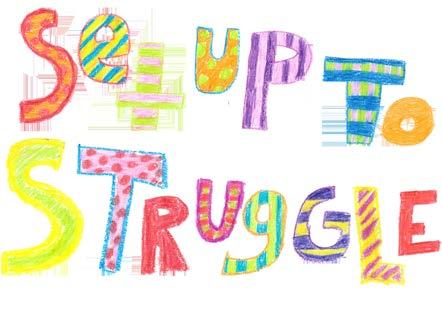


English Language Learner (ELL) students literally and figuratively traverse borders through education and countries. At Fremont High School, 22% of the student body, or 363 students, are ELL. That’s equivalent to adding another entire class or grade level of students who are navigating the challenges of learning a new language. Their journeys are filled with hardships and unique stories that are unimaginable to their peers as they seek a better life.
Many of the high school ELL students face challenges that the average student does not. These students often grapple with the difficulties of adapting to a foreign language and navigating a new educational system in an unfamiliar country. They may experience cultural dislocation, feelings of isolation, and pressure to succeed while trying to support their families who may still be adjusting to life in a new place, culture and society.
The educational system should not compound their burdens. ELL students are more prone to experiencing academic difficulties, social isolation, and emotional distress due to language barriers and cultural differences, which creates a tougher environment
for their educational success. Rather than their education being a source of empowerment and growth, it can often feel like just another hurdle in their journey. Recognizing and confronting these challenges is crucial to fostering a truly inclusive and empowering environment for every student at Fremont High School.
English Language Learner (ELL) students dedicate approximately 88 minutes each day over the course of two years to the critical process of language acquisition. This experience is somewhat analogous to Spanish classes for English-speaking students, where the emphasis is on developing proficiency in a new language. In the case of ELL students, the objective is to equip them with the necessary skills to understand, speak, read, and write fluently in English.
As they progress through the program, these students are ultimately required to take the English Language Proficiency Assessment. Successfully passing this exam is a prerequisite for exiting ELL services, enabling them to transition into mainstream classrooms where they can engage fully with their peers. However, FHS has a success rate of 20% proficient students.
“Say you take Spanish 1, 2, 3, and 4. Now, I’m going to just drop you off in a remote part of Mexico,” Hayden-Parra said. “You’re going to go to school in Mexico, and you need to pass all of your classes. You can’t? You took all of the basic Spanish classes. What do you mean you can’t? A lot of what you learn when you are first learning a language is not academically based.”
However, the journey does not end there. After exiting the program, ELL students are supposed to be monitored for an additional two years to ensure they have not advanced too quickly and continue developing their language skills. But who is truly tracking their progress? In reality, their status is simply marked in PowerSchool as ELL. There is no dedicated caseworker, and no one-on-one mentoring like students with IEPs or 504 plans receive. To genuinely support ELL students, the program must go beyond labels by focusing on improving language acquisition, enhancing course accessibility and providing individualized support. Strengthening these efforts would not only create more successful students in the classroom but also increase graduation rates and reduce dropout rates, setting them up for long-term success beyond high school.
Monitoring mechanisms are vital to validate that these students are managing the transition successfully and maintaining their language proficiency. Without comprehensive tracking and support, there is a risk of overlooking the challenges some former ELL students face in their academic environments. It is important to examine the systems in place to assess whether they provide adequate support and accountability for students who have exited the program, ensuring that all ELL students are empowered to thrive academically and socially.

Taking a 180-degree turn from speaking Spanish, or another common language in the Fremont community such as K’iche, a Mayan language spoken by many Guatemalan ELL students, to
To meet credit requirements, ELL students are often placed in classes they are not adequately prepared for, with teachers who may have been trained in Sheltered Instruction Observation Protocol (SIOP) but are not necessarily implementing it. There is little to no accountability in ensuring that these strategies are being used effectively. As a result, the graduation rate for ELL students is only 60%. This system sets both students and teachers up for failure rather than success. Instead of being placed in courses they struggle to understand, ELL students should have access to English-focused instruction or elective classes conducted in Spanish to bridge the language gap and support their academic growth.
were like, ‘Okay, here’s your classroom,’” Hayden-Parra said. “I looked around and asked, ‘Where is my stuff? What am I teaching? Where are the books?’ and they said to me, ‘Oh, there really isn’t a curriculum. You just kind of get to make it.’ That was very stressful. You’re flying the airplane as you’re building it.”

The FHS curriculum requires all students to take Personal Finance, American Government, and American Literature. However, ELL students are placed in these courses without the support of paraeducators, making it difficult for them to fully engage with the material. Offering Spanishlanguage versions of these classes would provide ELL students with a stronger foundation in financial literacy
“Rather than viewing these students as an obstacle, the district must recognize them as an opportunity.”
learning English is a tremendous task. It becomes even more challenging when ELL students are placed directly into classes conducted entirely in English. Currently, FHS assigns ELL students to classes based on their English proficiency, which often ranges from no proficiency to extremely low knowledge of the language, reflecting their academic level.
Unfortunately, this placement extends to elective courses as well, which are predominantly designed for 100% English speakers. These electives do not account for the unique needs of ELL students, leaving them disengaged and struggling to keep up. To better support these learners, electives should be tailored with various levels of difficulty and language support, enabling ELL students to build their skills at a pace suited to their proficiency. Such modifications would not only enhance their educational experience but also foster a more inclusive learning environment.
“The staff was trained on SIOP strategies, I do not believe using those strategies is being enforced. Many teachers are not truly using SIOP,” counselor and former ELL instructor Desiree Hayden-Parra said. “They tend to use modified assessments meant for students receiving Special Education services, which is not appropriate for ELL students. This is because the issues ELL students face are caused by a language barrier, not a cognitive issue. Even when I was a teacher, no one was checking up on me to ensure I was using the SIOP strategies. Teachers guiding ELL students through high school have not been provided with a structured curriculum, some might argue that one doesn’t exist at all. To better support the growing Hispanic population, FHS must take the next step by developing a comprehensive curriculum tailored for newcomer ELL students.
“When I was a newcomer ELL teacher a couple of years ago, I came in and they

and American history, ensuring they can grasp essential concepts while continuing to develop their English skills.
These classes cover essential subjects, providing what is considered general knowledge in the United States. However, expecting teachers to accommodate students they cannot communicate with is unrealistic, especially given the ongoing teacher shortage. While hiring more bilingual paraeducators could help, paraeducators are typically parttime and earn low wages, making it difficult to attract and retain qualified individuals. Additionally, requiring teachers to specialize in ELL instruction isn’t a feasible solution. A more sustainable approach is needed to ensure ELL students receive the support they need without overburdening an already strained education system, but we do not live in a perfect world.
“A piece of this is also having somebody


to manage the ELL program,” HaydenParra said. “Mr. Grossman is head of the department, but with his duties as dean, it’s not in his position to manage the program adequately. These kids’ progress needs to be tracked. We really need somebody who can support teachers and help them understand how to make accommodations or modifications for these students.”

Students are permitted to earn a standard diploma with only 210 credits instead of the traditional requirement of 250 credits, which was reduced a few years ago due to COVID-19. However, for this to happen, a student’s parent or guardian must meet with FHS staff. While this option is beneficial, FHS should prioritize providing more support to students who need help rather than lowering the credit requirements. Reducing the credit threshold may make graduation easier, but it compromises the quality of education and lowers academic standards. The current high school students are the future leaders, workers, and voices of America, and they deserve access to the best possible education.
FHS, like all public schools in the United States, is legally required to provide education to every student, regardless of citizenship status. Title
students, including those who are ELL. Yet, laws alone are not enough, true educational equity requires action. Currently, there are no specific requirements for a student to enroll at FHS, even if they do not speak a single word of English. A student can arrive one day and be expected to navigate an unfamiliar language and system the next. While this open-enrollment policy ensures accessibility, it also exposes a major gap in resources and support. The Hispanic population is at an all-time high and will only continue to grow, meaning the demand for effective, high-quality ELL education is greater than ever.
Rather than viewing these students as an obstacle, the district must recognize them as an opportunity, an opportunity to build a stronger, more inclusive education system that doesn’t just meet legal requirements but sets students up for success. That means structured ELL curriculums, effective teacher training, tailored course options and long-term language acquisition support. These are not luxuries; they are necessities.
If education is truly meant to be the great equalizer, then it’s time to ensure that ELL students are given an equal chance to succeed. Not just in school,
school year: the Newcomer Academy. This program is designed to provide multilingual learners with access to specialized courses that integrate language instruction with academic content.
“We looked at programs across the country and met with Lexington Public Schools, who have a similar program at their high school level to get a starting point,” Instructional Facilitator Allie Graham said.
The focus is not just on helping students graduate, but on equipping them with the English language skills necessary for long-term success in the United States.
The Academy represents the culmination of efforts by dedicated educators who analyzed student data, identified systemic gaps, and collaborated to implement a meaningful solution. As curriculum development continues over the summer, there is a renewed sense of hope that this program will offer a more structured, supportive path for ELL students at FHS.
“This really is a dream come true for me and the students,” counselor Desiree Hayden-Parra said. “It’s here, it’s happening, and the first course requests for the academy have been made.”






Porsche Prado
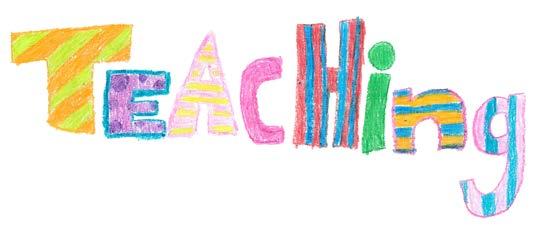
Becoming a teacher is a journey fraught with challenges. Educators must navigate the teenage environment, find ways to keep students engaged, and grade assignments far beyond their paid hours. Yet, the dedication and hard work of teachers often go unrecognized. At Fremont High School, staff face numerous obstacles, many of which the public may never consider, all while working in an increasingly complex education system. With the casual use of cell phones and a growing sense of apathy among younger generations, the teaching profession has never felt more demanding.
This raises an important question: What has fueled the apparent defiance among students? Some blame cell phones, while others point to a generational disengagement from traditional educational values. However, rather than solely blaming teachers for students’ poor grades and lack of motivation, the public must also consider the influence of the home environment. Students often demonstrate a clear disinterest in their education, which likely stems more from a lack of involvement at home than simple discipline problems.
“I think a large issue facing many of our students is not having a supportive family at home,” said English teacher Stacey Smith. “When kids do not have people at home that they can go to and
talk about their day, that is a problem. When parents support the bad habits of their kids or even supply them with the means to participate in these behaviors, kids do not have a chance. We need parents to be role models and want more for their kids than what they have received in life. I know we have some great families in the district, but many of the kids I see on a daily basis are not having their basic needs met at home.”
Despite this, teachers are often the ones blamed for any decline in education. It is all too common for parents to scapegoat teachers when their children struggle academically.
“The criticism used to bother me, but now it doesn’t as much,” said Glenn. “The only thing I can do is educate people and bring awareness to the realities of educators. Their criticism isn’t stopping me from coming into my classroom every day and being here for my students, despite the challenges and criticism we get.”
Even when lesson plans are engaging, teachers struggle to compete with distractions like social media. Unfortunately, for some students, nothing taught in the classroom will ever be more important than those who just liked their Instagram posts.
“I think with cell phones and social media, we’re kind of living in this make-believe world,” said English and History teacher Ashley Bignell. “We’re
losing some social interaction and some social skills as well. In the classroom, I think phones can be great for a specific planned activity or tool. Technology is great when you’re using it productively, but it’s really hard to get through to students when they can’t put that cell phone down.”
Despite these obvious distractions, teachers remain accountable. The phrase “just in it for the money” is often misapplied when directed at educators. Teachers don’t work for a paycheck; they are driven by a passion for their students. However, earning a higher wage in education often means increasing one’s own education, sometimes spending thousands of dollars to earn a doctorate. Most teachers are committed to doing what’s best for their students, but empathy is often required in a way that isn’t always written into the job description. Society is tightening standards while ignoring others. School is no longer viewed as a place to learn and grow; students now often treat it as just another part of daily life.
“When society allows things to happen, what do you think is gonna happen?” said art teacher Mara Horning. “The kids think it’s okay. It’s not their fault; they’re the kids. The adults could rein it in.”
Behaviors spread rapidly among students, leading to a heavier workload for teachers. These additional
responsibilities sometimes involve duties like supervising bathrooms to ensure student safety due to the rise of vaping and other distractions.
“I believe teachers need more support, more time, and more (and better) parental involvement,” said Shea Ahrons. “Teachers need to be supported by administration when there are problem behaviors, and these behaviors need to be handled consistently and with fidelity. Teachers also need more time to plan, grade, and organize. We are asked to do a lot that physically cannot be done during our 88-minute plan periods. Finally, productive parental involvement would be a game-changer. So many times, parents are quick to blame teachers when their student’s grades drop, but in the past, parents would blame their child. Parents need to understand we are here to support their students, but we cannot make their students do the work.”
“I think assignments such as bathroom or cafeteria duty are demeaning, especially for those with higher degrees,” said English teacher Justin Bigsby. “Unfortunately, most districts don’t have the financial backing to hire nonteachers to take on these assignments, so the responsibility falls on the teachers.”
Teachers come to work to teach and set students up for success. However, this is only a fraction of what they’re tasked with. Fifth block, Fremont’s version of detention, is an example of teachers volunteering their time to supervise students who need to catch up on homework or sit quietly. It is an exhausting task for teachers who already give so much of themselves.
“It leaves me exhausted sometimes,” said special education teacher Jen Ramsey. “It allows me to get to know and help a lot of kids who normally wouldn’t know me, which helps to balance it out. I have my nine-year-old dropped off here and we just ride it out.”

often feel unsupported and undervalued, which adds another layer to the already demanding role. Many teachers are not only tasked with the educational needs of their students but also battle against systemic issues and public misconceptions.
“I feel massively underutilized and underappreciated. I am really tired of trying to prove my worth. I am really tired of fighting with people who are trying to ban books and trying to fight the misinformation on the internet. I am tired of having to fight for support. I’m tired of trying to advocate for my position. I am tired of getting taken advantage of. I’m tired of the behaviors and trying to tell people I matter. I’m tired of paying out of pocket for school supplies and books that I don’t have money in the budget for but I need. It’s a never-ending struggle. I’m tired of being seen as a ‘purveyor of pornography’ when I’m just trying to buy books and materials that students like to read. I’m tired of being micromanaged. I’m tired of paying exorbitant amounts for health insurance. I’m tired of my position being misunderstood,” said Dana Fontaine.
The struggles faced by teachers today go far beyond the classroom. The demands placed on educators, whether through distractions, public criticism, or the overwhelming responsibility of managing an entire classroom, are compounded by systemic issues and a lack of support. While teachers are not merely vessels of knowledge, they are also pillars of emotional and academic support for their students. Unfortunately, many teachers feel underappreciated and undervalued despite their tireless efforts to guide students toward success. The reality is that teaching is not a job; it’s a lifelong contract with a side of unwanted parenting, therapy sessions, and fulltime crowd control.
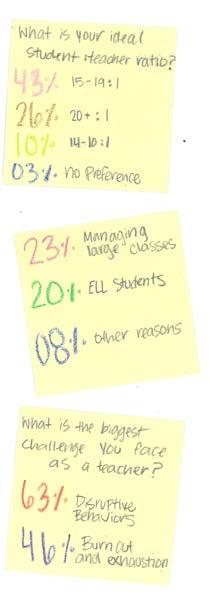
Data was collected from anonymous teachers based on their experience in the current school environment.


Annabelle Bignell
The 7:45 a.m. bell rings at Fremont High School, an obnoxious ding that signals the daily stampede. Students jolt through crowded hallways, their backpacks clashing, hurried apologies lost in the chaos. But the real struggle is not just with physical space; it’s the growing challenges of overcrowded rooms, overworked teachers and disengaged students combined.
In today’s education system, major concerns have emerged: How does overcrowding affect learning? Why are teachers leaving the profession left and right? What role do student behavior and parental involvement play in the growing crisis? These questions highlight the reality of a system where lessons compete with side chatter, discipline takes precedence over discussion and overwhelmed teachers find themselves repeating instructions to students more focused on their phones than the lessons at hand.

Homework piles up, but motivation dwindles. Resources are stretched thin, yet expectations remain high for many educators. In a system bursting at the seams, education becomes less about learning and more about survival. As the demand for high-quality education continues to rise, schools are confronted with a significant challenge: how to deliver quality instruction time when classrooms are overcrowded, teachers are burned out and some parents seem to be convinced they could do the job better themselves, despite never having set foot in a classroom beyond their own school days.

don’t feel like I can give all students my best all the time. Every student deserves the best of me and it’s impossible to reach that many students as one person. Sometimes it feels like babysitting, not teaching.”
Leffler’s frustration is not unique; many teachers at FHS echo the same sentiment and face these challenges daily. Large class sizes don’t just overwhelm teachers, they also hinder student engagement and academic success. Teachers consistently report that large class sizes with limited space make it difficult to provide individualized attention and maintain an effective learning environment. “Having large classes makes it hard
“Every student deserves the best of me and it is impossible to reach that many students as one person.” - Kelsey Leffler
Classroom size and student behavior are perhaps the most glaring issues. Teachers in honors classes often report that the smaller student-to-teacher ratio, typically around 15:1, makes it easier to engage students and provide individualized attention students need. This sentiment is echoed across the district, where general education classes often have ratios of 25:1 to 30:1, sometimes even higher, meaning teachers must manage more students with fewer resources. This strain on educators is undeniable and growing. Kelsey Leffler, a Family Consumer Science teacher, explained the strain: “I

to build strong relationships with individual students and provide needed one-on-one help,” English teacher Ashley Bignell said. “It hurts all students in the class because I can’t teach as effectively or efficiently as I’d like because I’m constantly pulled in a million different directions. I spend more time putting out fires than actually teaching.”
According to data from Mike Schleicher, the high school registrar, out of 1,011 annual courses facing overcrowding, more than half (657) have over 18 students and 249 exceed 30 students per class “limit.”

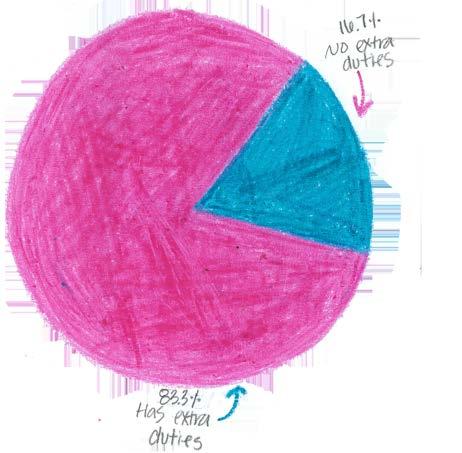

they need. The consequences result in a diminished educational experience for students and increased strain on already overworked educators. Students from disadvantaged backgrounds will be the hardest hit, increasing and worsening the inequities in education. Some students may not graduate with the life skills and knowledge they need to be successful in the workforce or in further education. While there may not be an immediate impact, over time, this will essentially create a domino effect, where the educational system produces a poorly educated workforce.
Classroom disruptions have escalated far beyond minor inconveniences; they’ve become a full-blown crisis, wreaking havoc on the very foundation of education. Once rare behaviors are
of the building and wandering the halls as if rules don’t apply to them. But it’s no longer just about truancy or the lingering smell of “Blue Razz” in the bathrooms, students have literally ripped toilets and sinks off the walls, causing tens of thousands of dollars in damages that could have been used to improve the school.
For a glimpse into the chaotic side of school life, people can search “fhsalmostfriday” on Instagram. This unofficial account, created by an anonymous student at FHS, requests and showcases “funny content of school shenanigans” submitted by local students. A recent post showed a student jumping on a bathroom sink and breaking it off the wall, just one example of the increasingly reckless behavior making its way into school life.

“There are lots of great kids that deserve to be in classes and hallways with kids that can control their behaviors and that want to be there to learn and get a great high school experience, but they genuinely cannot with the way some modern-day students are acting,” physical education teacher Scott Millard said.

A former Fremont High School teacher, who wishes to stay anonymous, revealed they left not only Fremont Public Schools (FPS) but the entire education field due to the overwhelming lack of accountability within the school system.
“I could report incidents to the office, something that would result in expulsion at any other district would be a 5-day suspension here. ‘Repeat offenders’ were only given a couple of days out of school,” the former teacher said. “The fact of the matter is that teenagers, whether they realize it or not, appreciate three things in school, particularly if they have a rough home life: structure, routine and accountability. I was able to provide two of those in my classroom, but by the end of my time at FHS, I was powerless to provide the third.”
When students see that rules are not enforced consistently, or at all, they lose respect for authority and for the education system as a whole. Many modern-day students seem to believe that education is a chore, not a privilege.


Student behavior and academic challenges often stem from two extremes: a lack of parental involvement or parental overreach and interference. Some teachers feel undermined and powerless when parents refuse to hold their children accountable, dismissing

Rather than holding their children accountable, many parents have taken to “Fremont Nebraska Discussions” on Facebook to complain about teachers, school policies and administration instead of working with educators to find solutions. The impact of disengaged or combative parents is reflected in student behavior and academic performance. When students see that
respect and working with school staff rather than against them. Without shared responsibility, the cycle of disengagement will persist, further straining educators and ultimately failing students.

not reinforced home and quickly deadlines, talk back, disengage or even vandalize
a cycle in which students graduate
more qualified teachers, increasing mental health support for students
Teachers across the country are not just overworked, they are exhausted, undervalued and expected to take on far more than their job descriptions entail. Many work long hours after the mandatory school day, juggling lesson planning, grading and even acting as bathroom monitors to prevent students from vaping or vandalizing.
“Our job is to teach our content area, not raise the child,” Bignell continued to say. “Too often we’re forced to teach accountability, common decency, respect and even proper personal hygiene practices. My job is to teach students about history and literature, not how to respond without cursing at someone, how to meet deadlines or to feed them, but those are daily parental tasks that most teachers in this building do all the time.”
For some teachers, the lack of support has been so severe that it has pushed them to the brink of quitting or reconsidering their career.
“Sometimes it feels like babysitting, not teaching.”
- Kelsey Leffler
“I thought about leaving teaching my first year at FHS,” said Desiree HaydenParra. “When I took the newcomer teacher position, I knew that the program was struggling, but I wasn’t aware of how bad it really was. I was given a classroom, computer, desk and chair—that was it. There wasn’t a curriculum that was being used, and I eventually had to give up my planning time to teach another class since more students kept coming, and I was



Editorial cartoon depicts various expenses that “break the bank” of teachers.
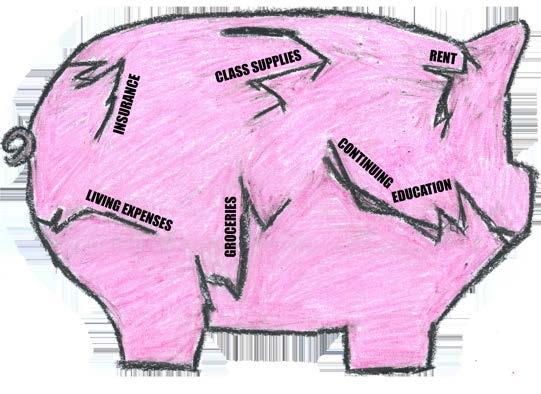
already maxed out with 32 students in my classes.” With no planning time at school, she was forced to prepare lessons from scratch at home, pushing her to the point of exhaustion. “It was a horrible, horrible year for me. I was so stressed, my body couldn’t hold up and I started getting sick all the time. My immune system was so bad, I even came down with RSV. My doctor also told me that I should seriously consider a change because my job was going to literally kill me.”
At the heart of the issue lies a truth: education is a shared responsibility. Schools cannot fix broken systems alone and teachers cannot be expected to carry the weight of society’s failures on their backs. Public education will continue its downward spiral unless we take action now. If society truly wants to see students succeed, they must start by respecting and supporting the
educators who dedicate their lives to shaping the future. The path forward requires collaboration, not division.
“If there’s one thing that needs to change in education, it’s this: if you have to focus your energy as a district on ‘looking good’ in the public eye, you have bigger fish to fry on the inside,” the former teacher said. “FPS only seems to care about having good publicity, flashy things that they can put on a poster or in a newspaper article, rather than fixing issues at their core.”
However, when parents refuse to support teachers in enforcing expectations, students learn that they can ignore deadlines, talk back, disengage and even vandalize without consequences. When districts fail to uphold clear policies and back their educators, the results are inevitable—a shock when students

enter the real world, and the cycle continues.
For parents, this means reinforcing expectations at home, teaching children respect, and working with local school staff rather than against them. For school districts, it means establishing firm policies, supporting teachers in maintaining discipline and ensuring that students understand accountability.
“Listen to the teachers,” the anonymous teacher said. “Listen to the staff. You need to answer if several people are sounding the same alarm. If those people are in the middle of the fire while you’re several miles away just kicking back, you need to understand that the ones fighting the fire know how to put it out better than you do.”


With its catchy lyrics and infections energy, Tate McRae’s So Close To What quickly climbed the charts, reaching the top of the Billboard 200 shortly after its release.
The album features hits like “It’s ok I’m ok” and “Revolving door,” which have been all over social media and the radio. I first heard “Revolving door” on TikTok and was intrigued enough to give the whole album a listen. After the first playthrough, I wasn’t sure how to feel, but it grew on me.
The album leans into pop and R&B, and it’s addictive to listen to. It balances vulnerability with a sense of strength through carefully crafted lyrics. McRae also features rap verses from Flo Milli and The Kid LAROI.
While some songs feel overpopulated on social media, it’s easy to hear why they’re so popular. My favorites tracks are “Greenlight,” “Like I do,” and “bloodonmyhands” (featuring. Flo Milli). I think that Flo Milli’s contribution blends perfectly with the song’s upbeat temp and lyrics.
Overall, I enjoyed So Close To What and look forward to more dynamic music from Tate McRae that fans can connect with.
After a four-year break from songwriting, Ariana Grande returned to the music scene and stunned fans with “eternal sunshine”. The album topped the charts and marked a new era in her music.
A year later, she released the deluxe edition: “eternal sunshine deluxe: brighter days ahead,” featuring six new songs. Honestly, I’m not sure how they didn’t make the original cut—they fit the album’s ambiance beautifully.
The deluxe portion opens with “intro - (end of the world)extended.” The original track was already a fan favorite, and the extended version is even better. I always felt the original was too short.
My favorites are “twilight zone” and “Hampstead.” I love the soft beat of “twilight zone,” and the lyrics are catchy and easy to sing along with. “Hampstead” feels like closure—both to this album and a chapter in Grande’s life. In an interview, she said it was her favorite song she’s ever written. Its subtle but strong lyrics align perfectly with the melody.
The album as a whole has an ethereal vibe that complements Grande’s voice beautifully. I thoroughly enjoyed “eternal sunshine deluxe: brighter days ahead,” and can’t wait for her to release more music.


Sabrina Carpenter’s newest album may be short, but it’s certainly sweet. Short ‘n Sweet (Deluxe) came out on Feb. 14, 2025, and made for a fantastic Valentine’s Day gift. The deluxe version features five new songs that all blend seamlessly with the original tracklist. The songs range from bubbly, vivacious tracks like “15 Minutes” to slower, more emotional ones such as “Couldn’t Make It Any Harder”.
Some songs are brand new, while others—like “Busy Woman”—have been highly anticipated by fans. I first heard “Busy Woman” on a podcast on Spotify before its official release. My favorite track on the album is “Bad Reviews”. The lyrics are instantly loveable, and I think many people specifically in my generation can relate. In fact, I listened to it 24 times within the first week of release—it’s also the perfect closer to the album.
Another standout is “Couldn’t Make It Any Harder,” which reminds of Olivia Newton-John’s “Hopelessly Devoted To You”—another beloved classic. The album’s infectious melodies and catchy lyrics make it easy to sing and dance along to.
Although Short ‘n Sweet (Deluxe) is nearly perfect, I wasn’t sure how to feel about “Please Please Please (Feat. Dolly Parton)”. I was excited when I heard they were collaborating, but their voices didn’t mesh well with the song. I really wish I could grow to like it. If they had worked together on “Slim Pickins”—another track from the album—it might have been a better fit given Parton’s background. That aside, I thoroughly enjoyed the album and think that Sabrina Carpenter nailed the completion of Short ‘n Sweet.
“So many different genres, so many different styles, so many different dreams” is how Lady Gaga describes her latest album, Mayhem. True to its title, the album features 14 tracks that span a wide variety of genres and styles.
Mayhem is known to break many “music rules,” yet Gaga somehow makes it all work. “I love to break genre, and I love to explore music,” she said in an interview. The album is an eclectic mix of synth-pop beats, as heard in “Abracadabra,” and slower, more emotional tracks such as “Blade of Grass.” The album kicks off with “Abracadabra”, a high-energy opener that sets the tone for Gaga’s vision. It ends with the beloved “Die With A Smile,” which helped market the album and became wildly popular. It was the fastest track to reach one billion streams and quickly climbed to No. 1 on the Billboard Hot 100.
Some songs remind me of Charli xcx’s album “Brat,” released this past summer. My personal favorite is “How Bad Do U Want Me”. I love the bridge, where Gaga wrestles with her identity versus her public persona. The title even carries a double meaning.
The media often glamorizes fame, but Gaga contradicts this and pushes back on the narrative in “Perfect Celebrity,” a track that highlights the downsides of constant scrutiny and the impossibility of perfection.
Overall, I liked “Mayhem,” although I connected with some songs more than others.
Freshman:

Album: Folklore
Artist: Taylor Swift
Genre:
What is your favorite song on the album? Why?
“‘Seven’ or ‘the lakes.’ I just love the melodies in those songs, and I especially love the lyrics in ‘the lakes.’”
Are there any songs you skip? If there are why?
“I sometimes skip ‘betty’ because it’s not really the type of music I usually lean to.”
What mood does this album put you in?
“This album is woodsy, and very much so with the album cover. Its songs’ moods are nostalgic and partly sad. One of the sadder ones, in my opinion, being ‘this is me trying.’”
Would you recommend this album to your parents? Why or why not?
“I would recommend this album to my parents, because of all the great lyrics Taylor came up with, the melodies, and the feelings the songs make you feel.”
Sophomore: Sylas Mackey

Album: To Pimp a Butterfly
Artist: Kendrick Lamar
Genre: Hip-hop, Funk and Jazz rap.
What is your favorite song on the album? Why?
Are there any songs you skip? If there are why?
“‘For Free? - Interlude’ is the only song I skip.”
What mood does this album put you in?
“Enlightened”
Would you recommend this album to your parents? Why or why not?
“Hell yes. I would make my mom sit down and listen to this whole album.”
Junior: Kaden Klco

Album: Come Over When You’re Sober, Pt. 2
Artist: Lil Peep
Genre: Pop-punk
What is your favorite song on the album? Why? “IDGAF
Are there any songs you skip? If there are why?
“Yes, I would skip “Broken Smile (My All)” because it’s really depressing.”
What mood does this album put you in? “Energetic”
Would you recommend this album to your parents? Why or why not?
“No, my mom is weird when it comes to swear words.”
Senior: Nuray Mamedzade

Album: 21
Artist: Adele
Genre: Pop
What is your favorite song on the album? Why?
“Someone like you, because I just love the song and I love Adele. She was telling her story.”
Are there any songs you skip? If there are why?
“‘Rumor Has It’ and ‘One And Only,’ I just don’t vibe with them, they’re not as catchy.”
What mood does this album put you in?
“It’s kind of depressing, to be honest. I think Adele had a rough time when she wrote this album.”
Would you recommend this album to your parents? Why or why not?
“Yes, I would actually because there are no swear words. I think my mom would like Adele.”
Tiger's Eye News staff surveyed students and asked for their current favorite music, movie and TV show.
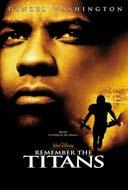



Which character would you want to be friends with in real life?
“The coach.”
How would you describe this movie in 3 words?
“Teamwork, segregation and overcoming.”
If you could recast 1 character who would it be and why?
“Gerry because his actor wasn’t that good looking.”
Is this movie best watched alone, with friends, or in a crowd?
“Probably alone.”
Which character do you think you’re most like and why?
“Cory, because when he struggles with things he relies on his friends to help him get through it.”
If you could live in the show’s world for a day, what would you do first?
“I would be friends with all the characters.”
If you could change one thing about the show, what would it be?
“Make it so Jude’s best friend doesn’t die”
Is this the kind of show you’d binge all weekend, or does it feel better to savor one episode at a time?
“I could binge it because there are a million seasons with a million episodes.”
Which character do you think you’re most like and why?
“Marianna, because she struggles with boy issues and feeling wanted. She feels that she needs attention from her mom.”
If you could live in the show’s world for a day, what would you do first?
“Ask Jesus to be my boyfriend and then get insight on how to be happy from Lina.”
If you could change one thing about the show, what would it be?
“Make it so Jude’s best friend doesn’t die”
Is this the kind of show you’d binge all weekend, or does it feel better to savor one episode at a time?
“I could binge it because there are a million seasons with a million episodes.”
Which character would you want to be friends with in real life?
“Optimus Prime.”
How would you describe this movie in 3 words?
“Robots, explosions and weird science.”
If you could recast 1 character who would it be and why?
“The government scientist because I didn’t like his acting.”
Is this movie best watched alone, with friends, or in a crowd?
“I think with friends because it’s funnier that way.”



1
Are you the reason your teacher sighs before class? Welcome to the ultimate test of self-awareness: a quiz to determine if you’re helping your teacher thrive or quietly driving them into the brink of madness.
The PowerPoint slide show you needed to today’s notes isn't working...what do you do?
a) Just ignore the problem.
b) Chant, “No PowerPoint, no class!”
c) Offer to troubleshoot the problem.
2
What’s your go-to excuse for missing homework?
a) Actually, I finished it early.
b) Wait, there was homework?
c) My dog ate it, I swear!
3
6
7
4
8 You forgot something important at home? What do you do?
a) Quietly borrow supplies from a classmate or teacher.
b) Announce dramatically “I guess I’ll just fail!” and do nothing all class.
What’s your reaction when your teacher announces a pop quiz?
a) Smile-I studied ahead of time!
b) Groan and hope it’s multiple choice...
c) Panic and Google the answers under the desk.
5

How do you handle feedback on a graded essay?
a) Use it to improve my next paper!
) Complain about how the teacher “doesn’t get me” and cry in the bathroom swearing off school forever.



How often do you check your phone during class?
a) Only when they’re not looking!
b) Never.
c) Every five minutes, TikTok doesn’t wait.
You see your teacher struggling and dropping papers, what do you do?
a) Laugh and take a Snapchat.
b) Wait for someone else to help.
c) Rush and help hold the door, duh?
Do you use AI on your school work?
a) Duh!
b) Ew no...?
9
How do you handle a substitute teacher?
a) Follow the lesson plans correctly.
b) Teach the class yourself because you CLEARLY know better...
c) Chat with your friends the entire period.
10
What is your response to “I’m collecting the assignment now?”
a) Shuffle papers and pretend you have it done.
b) Hand it in confidently!

c) Dive into your backpack saying, “it’s in here somewhere!!!!!!!”


